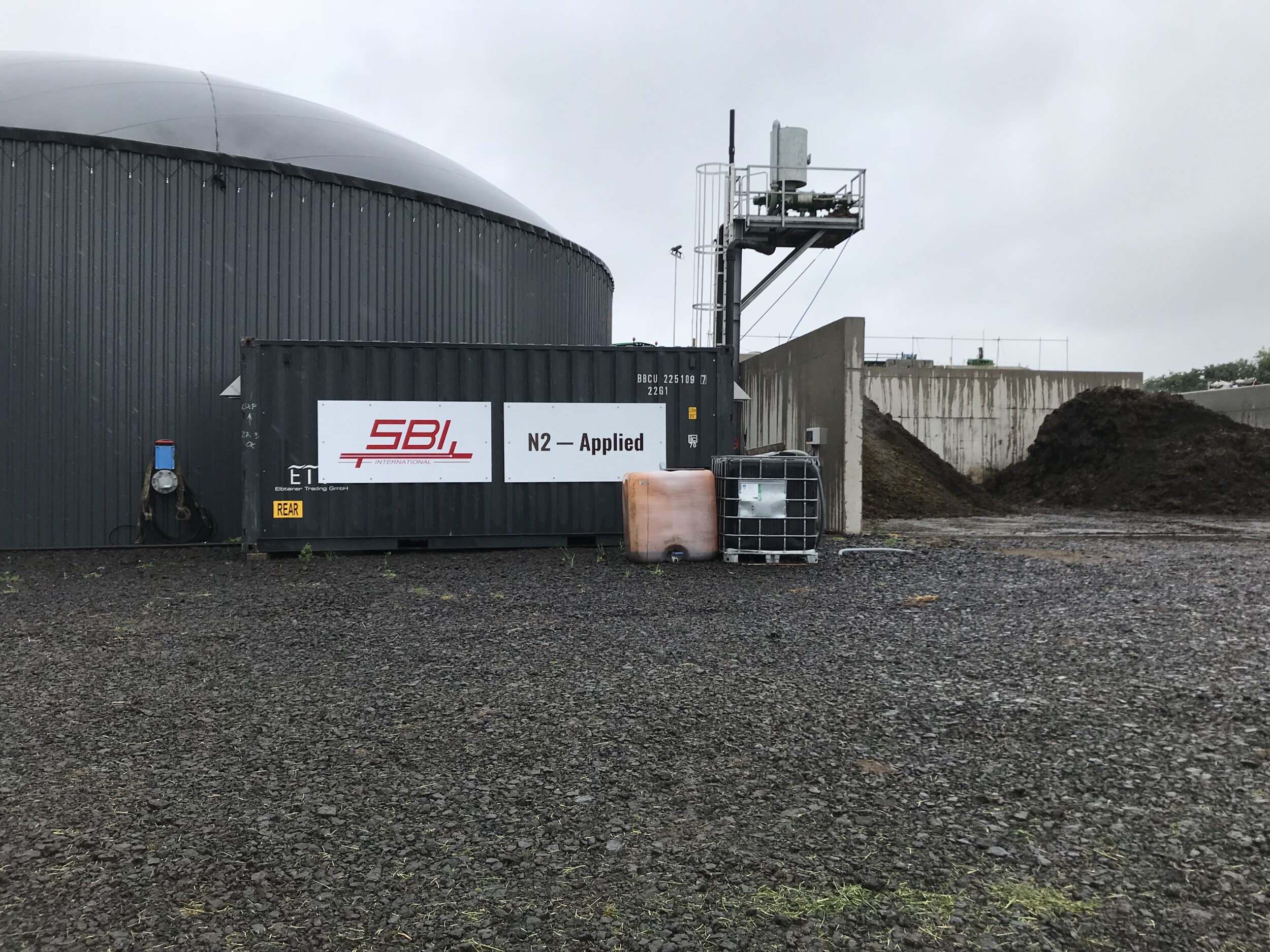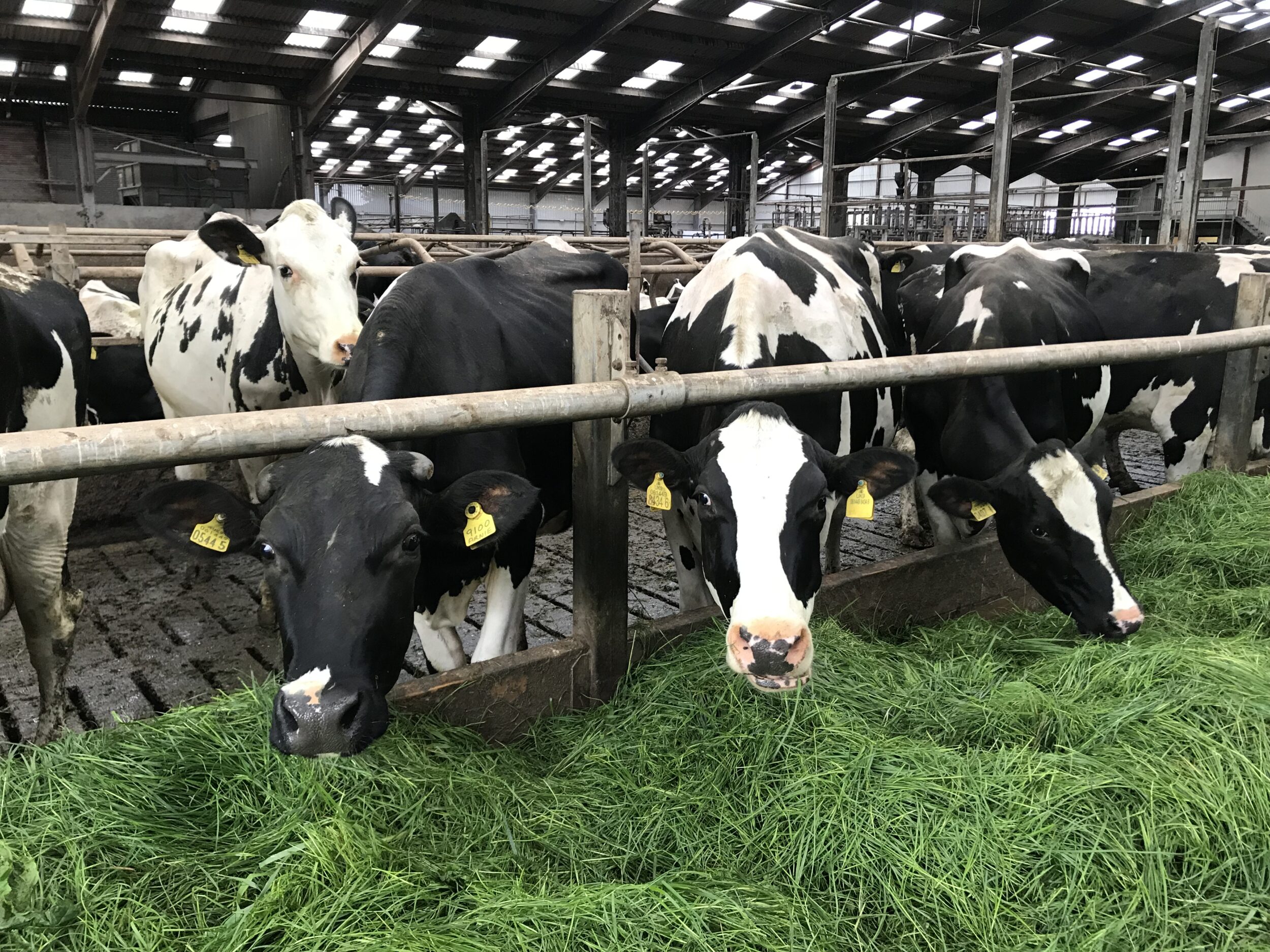Robin Bingham and his son George run a 260-hectare dairy farm in Templepatrick, Northern Ireland. The farm runs a zero-grazing system with 750 milking cows housed indoors. The Binghams' are familiar with prioritising sustainable initiatives on their farm, with the decision to opt for a zero-grazing system due to the potential gains in stock and land management. Where today, the fields are used to grow feed for the animals, ensuring a year-round supply of locally grown food.
Northern Ireland is well known for its livestock production systems, yet it is also "very heavily populated with livestock, and ammonia emissions are becoming more of a problem," said, farmer, George Bingham. While housing the cows has allowed the Binghams' to have greater control over the management of their operations, they still saw the introduction of chemical fertilisers as a weakness.
In 2018, a biogas plant was installed at the farm and has been in operation utilising slurry from the cows to generate electricity into the national grid. In 2018, the Binghams' decided to take this even further, by installing an N2 Unit on their farm, to treat the digested slurry, providing them with a complete fertiliser, suitable for spreading back on the fields, without the same typical emissions when slurry is spread.
George recognises by using N2's plasma technology, helps the family and farm achieve their goals of farming more environmentally friendly and leverage the value of the slurry to remove the costs of using typical chemical fertilisers. "I see this as a potential game-changer across the world helping farmers get more from their farmyard slurry and saving them money," said George.

